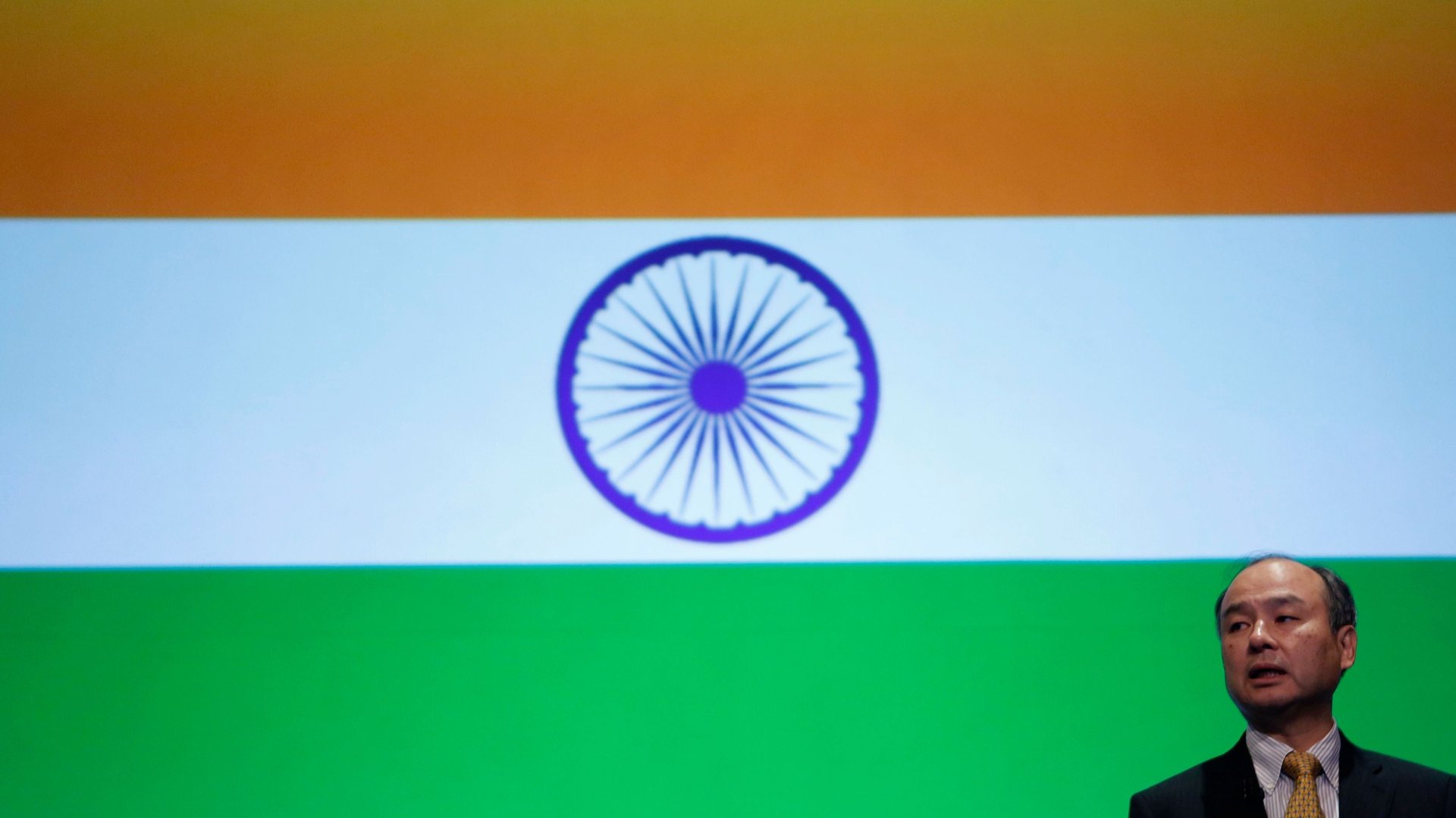SoftBank is reaching for the sun in India
Japan’s SoftBank is popular in India mostly for its massive investments in the country’s fledgling tech startups. But the group, headed by billionaire Masayoshi Son, is among the top players in another key industry in the country: solar energy.


Japan’s SoftBank is popular in India mostly for its massive investments in the country’s fledgling tech startups. But the group, headed by billionaire Masayoshi Son, is among the top players in another key industry in the country: solar energy.
SB Energy, SoftBank’s joint venture (JV) with Foxconn of Taiwan and the local business conglomerate Bharti Enterprises, won 15% of all successful auctions for large-scale solar power projects in India in 2018, according to the renewable energy consultancy firm Mercom India. SoftBank owns a majority stake in SB Energy.
In 2018, SB Energy won 2.2 gigawatts (GW) worth of large-scale solar auctions—second only to the Gurugram-based renewable energy firm ACME Solar. The JV was the second biggest winner of large-scale solar auctions in 2017 as well.
SB Energy missed the top spot for 2018 after the Indian government scrapped its winning bid for a 1.1GW project tendered in July 2018, reportedly because the tariff quoted was too high.
“SB Energy has access to SoftBank ’s capital, so it could undercut anyone in the Indian market…Other factors such as cost are same for everyone, but access to capital is what differentiates it,” said Manu Aggarwal, program associate at the Council on Energy, Environment and Water (CEEW), a New Delhi-based think tank.
A proponent of renewable energy, SoftBank while setting up the JV in 2015 had pledged $20 billion to build 20GW of solar infrastructure in the country.
India’s government has set a goal of increasing the country’s installed solar power capacity from the present 24 GW to 100 GW by 2022. To meet the target, it has been auctioning rights to develop large-scale solar projects, power generated from which would be sold to government-owned utilities at a fixed tariff. The developer to make the lowest bid for the tariff wins the auction.
The average tariff rate for the projects won by SB Energy last year is Rs2.73 ($.038) per unit of electricity, lower than the Rs2.83 for ACME’s projects, according to Mercom.
“SB Energy has been bidding for maximum capacity allowed for a single bidder in all mega-tenders,” said Mercom CEO Raj Prabhu. “They have used the bucket-filing method in reverse auctions to their advantage by bidding for the maximum capacity at the highest price (under the imposed ceiling) and always winning the leftover capacity at the maximum tariff.”
The government’s decisions to raise the maximum capacity that a single developer could bid in a tender from about 0.5GW to 1.8GW has further helped SB Energy.
“Lifting the cap on project bid size has helped developers with deep pockets,” Prabhu said. “There are not many who can commit to building a single gigawatt size project in India.”